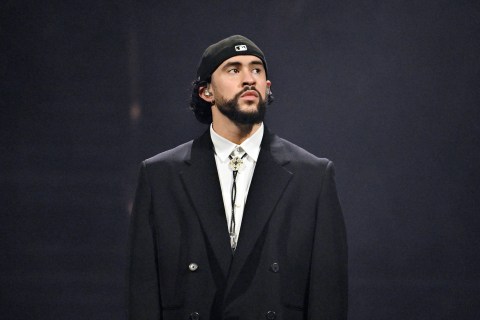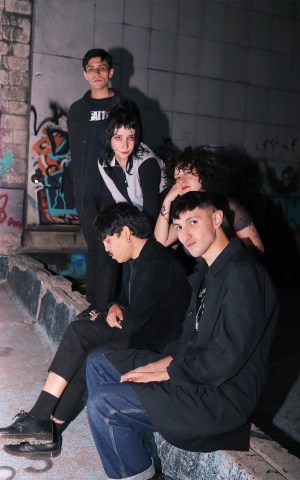Growing up on the south side of Chicago, Esperanza Rosas, better known by her artist name, Runsy, always knew she had a knack for art. But until recently, she never thought she’d turn it into a career. The 25 year-old — who illustrates, makes zines, does documentary photography and creates installations – has made a name for herself with work that explores her identity as a Mexican-American woman. Her black-and-white graphite illustrations draw heavily from her cultural heritage and community for inspiration; they often feature family members juxtaposed with symbols of Mexicanidad, including calaveras, botas, tattoos, and crosses.
Her career is on the rise (check out her collaborations with Chief Keef, Nike, Red Bull and Lollapalooza, among others). But like many young creatives of color, it took time for Runsy to find the confidence and encouragement to pursue her art professionally. And it also took time and experience to learn the ropes of managing the financial side of making art.
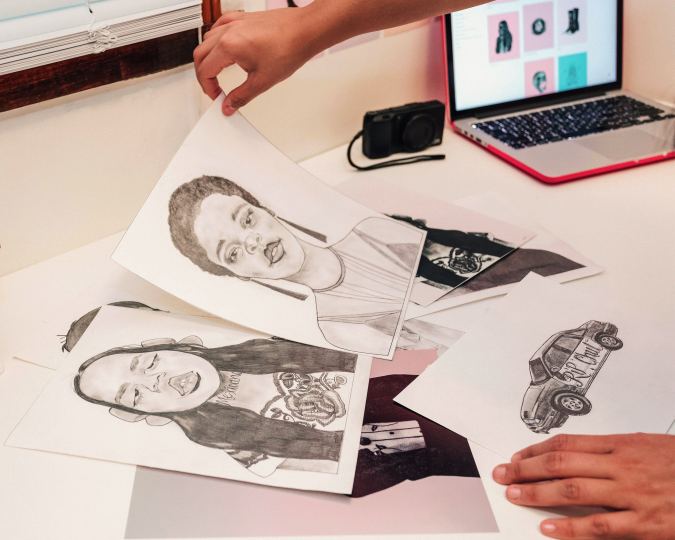
We caught up with the rising artist to hear her advice for how to make a living as a young creative – read below for tips on everything from budgeting to negotiating to how her family and Latino community helped her create a support network.
On Taking the Leap
I always liked art. I was always good at it, but it wasn’t something that I thought I could do professionally until I won a contest through Instagram. I submitted my work and was selected to fly to LA and be in a gallery show with FRANK151 as part of the Chief Keef gallery. When I went out there and saw my piece on the wall, I was like “This is cool! People actually liked my work enough to put me in this well-known gallery space.” That was the start, and from there people started recognizing me on Instagram. They’d reach out and say “We saw what FRANK151 did with you, let’s work on some cover art for me.” So I started working with a lot of Chicago artists, either making flyers for events or making cover art for their new music drops. But even then I still felt kind of doubtful [about where it could go.] I’d think “Ok I’m making cover art, I’m doing flyers, and people like them – but how can it be a career?”
I didn’t get a degree in art, I went to college and got a criminal justice degree. All through college my heart wasn’t in it, I just did it to make my parents happy. At the time I was taking art classes – I did get my minor in that – but my parents didn’t see art as a possible career. I always got the story like “El hijo de so and so went to art school and now look at him, he’s going to nursing school because art didn’t work out.” And I’d think “Well, I’m not the hijo de so and so, I’m your child. I know I can do this!” But I still went through college and just tried selling art on the side, selling zines, selling prints.
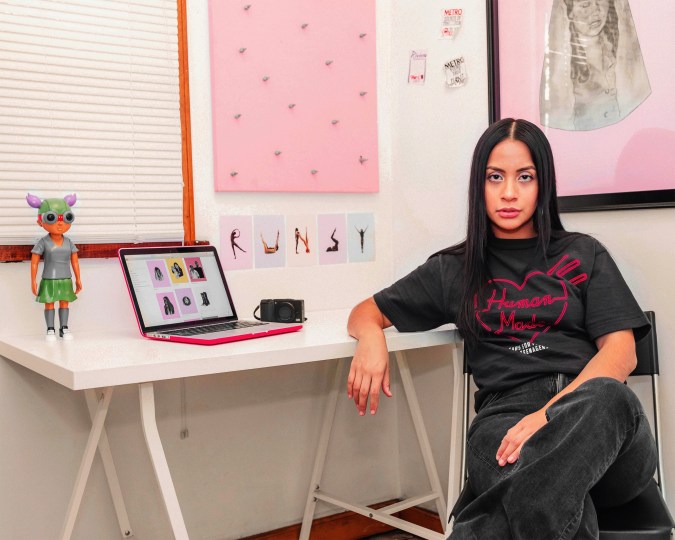
After I graduated, I got a day job, but was still hustling doing art on the side. It wasn’t until last year when I was working my [day] job that I thought, “I’m not getting enough time to work on my art. I’m sick of this. Let’s see how this goes [on my own].” And from there, big brands and companies started hitting me up. They commissioned me for illustrations, to do talks, and other projects. And I realized woah, the only person who’s not believing in me is me. If I have these companies and people actually buying prints at my rate, I’m negotiating well for myself – then damn, this is actually happening. The more work I started getting, the more I started believing in myself.
Once my parents saw me working with Red Bull and Nike because of my art, they were like “Ok, you actually are getting these big jobs and opportunities that we didn’t think were possible.” We’ve never seen this happen within our family. To a Latino family [like mine] getting to be in these creative spaces, getting these opportunities, is almost like celebrity status. It’s like getting out of the hood. Now that they see me doing it, they root for me 100%, and have been so supportive.
On Learning to Negotiate
The best thing I always do whenever I’m negotiating is contact people I’m close to for advice. For example, I’ll contact my sister and my best friend – one is an artist and one is in marketing. And I’ll say “Hey I just got presented this offer. What do you think?”
You’ve gotta ask for help. Usually I ask people around me “Hey can you review this email that I’m about to send out, what do you think? Is this too straightforward?” Create a tight community of your creative best friends, or even your friends who might have some business knowledge. Smart people you trust, who can help you out. That helped me figure out the best language to negotiate, how to compromise, how to set my rate. And once you’re able to get that start, then you can say “Ok I’ve already been paid at X rate, so I know if people are low-balling me or if I need to go up.”
On Budgeting
It’s important to keep a budget, even if you’re small and just starting off. You don’t have to be super fancy about how you do it. But it’s important to track your spending with receipts and invoices. Keep receipts for everything. Whether it’s new pencils, an Uber, a toll you paid to get to a meeting. Keep those receipts because tax season’s coming around, and you can deduct it when you do taxes.
It’s important to decide your priorities and create a budget accordingly. For example, I sell prints and I sell zines. The money I make from my art first goes to pay off my supplies, and then whatever’s left over is profit, of course. Once my supplies are paid off, I invest the rest in creating a new release of prints or zines, or in funding my next art project so I can increase my output. Whatever you want to do with your profit is up to you. But for me, it’s important to put as much as possible back into my art. When a check comes in I tell myself “What’s more important – buying new clothes, or investing that in something that’s going to help you make more art?”
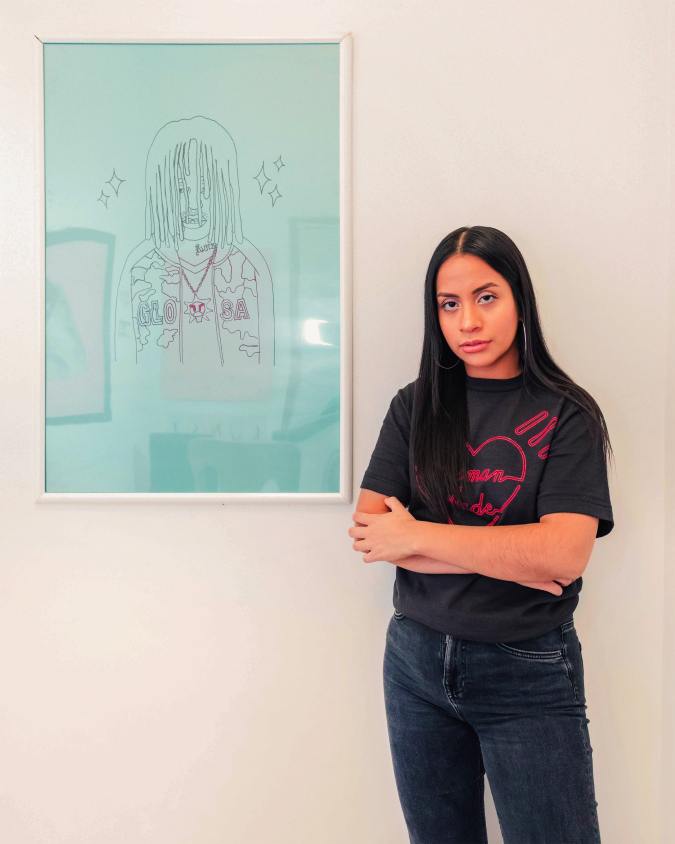
On the Importance of Hustle
My dad has always been a mechanic, always worked outside of the garage, but he also held it down at his day job. Seeing that definitely taught me to hustle and do what you love, even if it’s on the side. Seeing him work [repairing cars] after hours showed me I could go hustle and sell my prints while I was in school, go after commissions, and fight to make time for what I wanted to do.
At the same time, I think to myself “Damn dad, you are the man in the neighborhood. Anyone’s car breaks down, they come to you. You’ve got all your herramientas, you know your rates, why did you never open a shop to fix cars?” He lacked that person encouraging him, telling him “Get that shop, you’re great at what you do. You can start your own business and live comfortably with your family.” My dad never took that step, he always kept his job because it was security even though it wasn’t his passion.
I think seeing that inspired me to take that extra leap of turning my passion into my living.
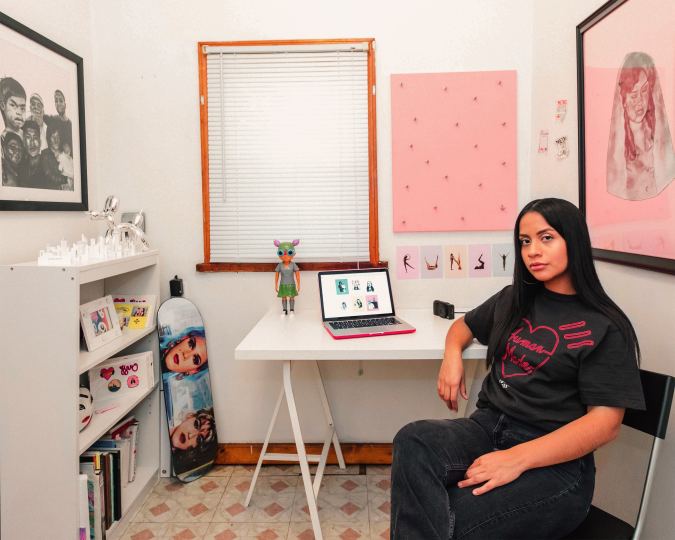
On Building a Supportive Community
My community is mainly my sister, my best friend, my mom. Whenever I’m talking something through with my mom, she’s the person who’s gonna cheer me on like, “Yes mija.” She knows I stress a lot with work and she helps me manage it. Your support community doesn’t always have to deal with numbers or business, it can also be about self-care. I always have my brother and my mom, who live with me, and they contribute a lot to my self-care. And then I have my best friends who I can bounce ideas off of – ask their opinions on how things look, whether they need revisions. Or I’ll hit up a friend who might be good at a specific program, let’s say Illustrator, and I’ll say “I really need to get this illustration from step 1 to step 2, how does this work?” And they’ll help me out.
It’s kind of like when you have a party, and everyone takes a role to make it happen. It’s like, “You bring the frijoles, you bring the sopa, you bring the decorations.” No one is competitive like “Damn, this party is better than my party.” In our culture we help each other out, whatever people need, we’re here to atenderlos. And that’s how I feel my sister, my friends, my family all help me out when I have these big deadlines. They’re willing to just make my life 100% easier.
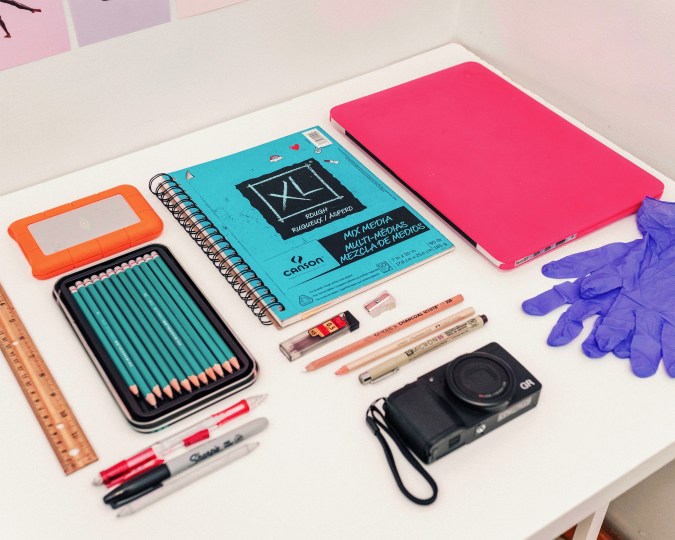
On Essential Tools For Young Artists
Create a website. It will help you present yourself more professionally, and you can do it by only spending $5-10 a month, which is what you’d spend on two coffees. I’ve gotten a lot of gigs off of my website. Instagram is a place to build a personal brand, mine has some of my art but it also has selfies, etc. You don’t want to be in a situation where you’re scrolling through your instagram archive if you need to show someone your work quickly – so I think a website is essential. You also have to have a CV – whether you’re applying for a job, or even just sending out an email inquiry to try and build awareness of your work. A CV I would say is a little different than a resume, you have to have all of your art history, who you’ve worked with, what you’re good at, and it’s prettier than a resume. I put a lot of work into making mine look nice because I feel like when people see it they’ll be like “Damn this is fire, we’ve gotta work with her, because this looks so good.” It helps you make a good first impression. Have an easy email; mine is my artist name @ gmail.com. That make it easy for people to find you and remember how to contact you.

